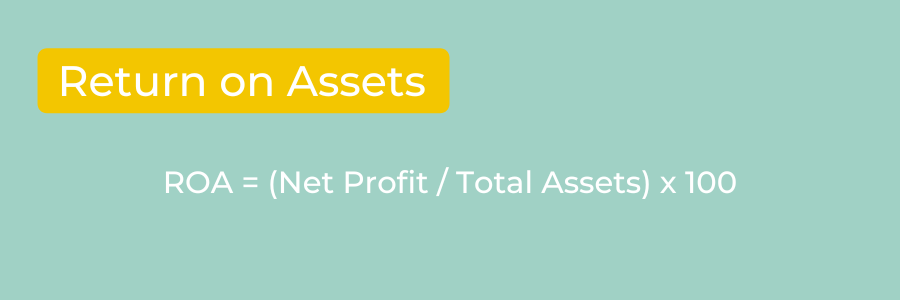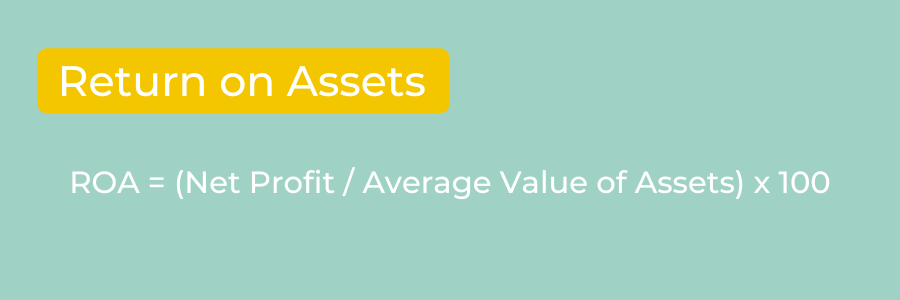Understanding Return on Assets (ROA): All You Need to Know
Return on assets often reflected as “ROA”. is a measure of how efficiently a company uses its assets to generate profits. Business leaders, analysts, and investors frequently use return on assets as one measure of the financial health of an organization, and it’s widely considered to be an important financial management KPI to track and improve.
How to calculate return on assets
The calculation for ROA is relatively straightforward:
Return on Assets = (Net Profit / Total Assets) x 100

All the figures for calculating return on assets can be easily found on most earnings reports.
Net profit, for example, is generally reflected on income statements while total assets can be found on a company’s balance sheets (either monthly, quarterly, or annually).
While the calculation shown above is effective and worth understanding, there are other (more advanced) ways in which to reflect return on assets. The advanced iteration of the formula differs in that it accounts for the value of how the value of assets change over time.
The adjustment itself is relatively straightforward to make: we simply need to use the average value of assets owned in a given time period as opposed to the total assets at the end of the given period. The alternative, more advanced, formula for calculating ROA is as follows:
Return on Assets = (Net Profit / Average Value of Assets) x 100

Now what? Making use of return on assets
As we mentioned, return on assets can be particularly relevant when evaluating the success and financial health of an organization. Rising ROA figures indicate that a company is making more profit for each dollar it owns in assets. Simply put, the company is becoming more efficient. A declining ROA, following the same logic, likely indicates a company has made poor investments and could be an orange flag that something is amuck.
This being said, the time period over which you’re evaluating return on assets is going to be particularly relevant to consider before drawing any conclusions. For example, if an organization makes a significant investment in equipment, and ROA is calculated shortly after making that investment, it's understandable if the figure is (at least in the short term) much lower than what's been previously reflected.
You may be wondering: “what ROA should we be aiming for?” While a single target for return on assets doesn’t make sense given the variance in industries and company sizes, a “good” ROA, generally speaking, is anything above 5% (depending on the context), while something above 20% is generally considered to be excellent. At the end of the day, the higher the ROA the better.
Be careful! The limitations of ROA
ROA is not something that is always useful when comparing one company with another, especially if they differ in size or the industry in which they operate. This is especially true when organizations differ in maturity levels.
It’s, therefore, a good rule of thumb to use ROA only for single-business analysis, evaluating the change over time (typically quarterly or annually) to understand financial trends and organizational efficiency.
Additionally, as we mentioned, ROA is only one of the many ways you can measure the efficiency and financial health of a company. So, it's important to take the measure with a grain of salt.
Return on assets is influenced by many things, from market conditions to varying asset prices, and should therefore be combined with other metrics for a more comprehensive analysis.


